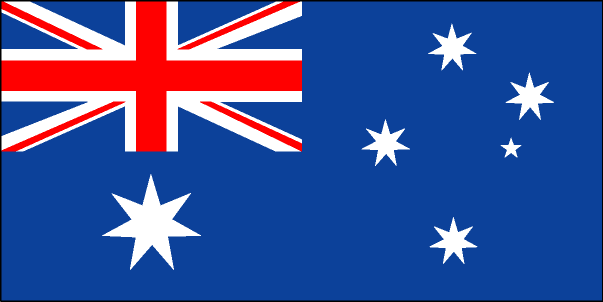Overview of Australia

The Commonwealth of Australia is a highly developed country located between the South Pacific and Indian Oceans, consisting of islands such as the Australian mainland, Tasmania, and overseas territories. Its land area is 7.6882 million square kilometers, making it the only country in the world with a land cover of an entire continent.
Population and ethnicity
As of September 2023, the total population of Australia is 26.82 million. The main ethnic groups include British and Irish (51.1%), Chinese (5.5%), and Indigenous (3.2%). The official language is English, and Chinese is the second most widely used language after English. About 43.9% of residents believe in Christianity, while other major religions include Islam, Hinduism, Buddhism, Sikhism, and Judaism.
Political system
Australia implements a parliamentary constitutional monarchy, with King Charles III as the head of state and the Governor General as his representative. The current governor is David Hurley. The Federal Parliament was established in 1901, consisting of the King (Governor), the House of Representatives, and the Senate. There are 151 members in the House of Representatives and 76 members in the Senate. The federal government is composed of the majority party in the House of Representatives or a coalition of political parties, with the Prime Minister leading the cabinet. The government term is generally three years.
The overview of the Australian economy mainly includes the following aspects:
Abundant resources: Australia has abundant natural resources, including over 70 types of mineral resources such as lead, nickel, silver, etc. It is the world's largest producer of lithium and also a major exporter of coal smoke, alumina, zinc concentrate, and other minerals. Australia's iron ore has a high iron content and is exported in large quantities to foreign countries, especially China.
Developed service industry: The service industry is the leading industry in the Australian economy, accounting for over 70% of GDP. The main industries include finance, education, tourism, and information technology services. Australia has a sound and efficient financial services system, and Sydney is the most important financial center in Australia.
Importance of Foreign Trade: Australia's foreign trade holds a significant position in its economy. 70% of agricultural products, 80% of resource products, and 18% of manufacturing are exported. The main export products include iron ore, coal, natural gas, and gold. China is one of Australia's major trading partners.
Stable economic growth: Since the 1990s, the Australian economy has maintained sustained growth, with an average annual growth rate of 3.5% from 1991 to 2008, ranking among the top OECD countries. Despite the decline of the mining boom in recent years and a slowdown in economic growth, the Australian economy has maintained positive growth for 27 consecutive years.
Significant impact of foreign investment: Foreign investment has a significant impact on the economic development of Australia. China is one of the main sources of investment, especially in the mining and energy industries. These investments have promoted Australia's economic growth and exports.
In summary, the Australian economy relies on abundant resources and a developed service industry, and foreign trade plays an important role in its economy. Its economic growth is stable and significantly influenced by foreign investment.

